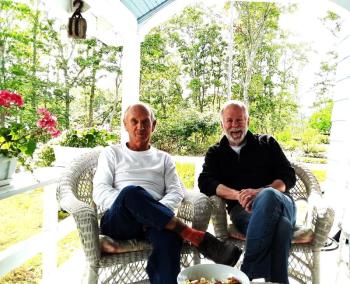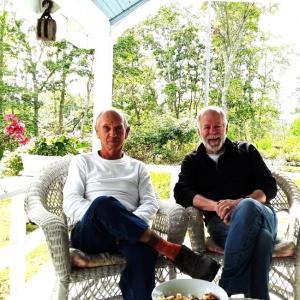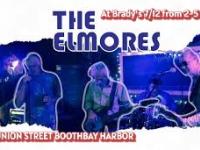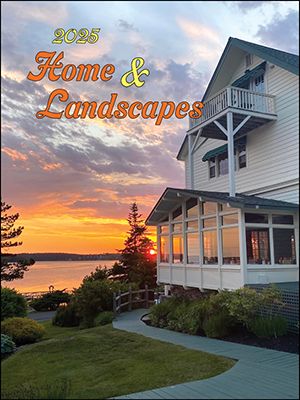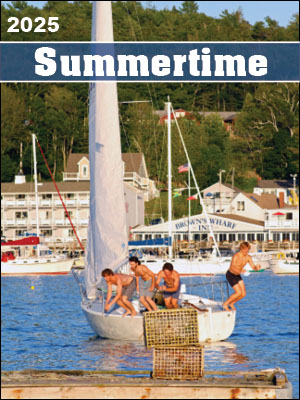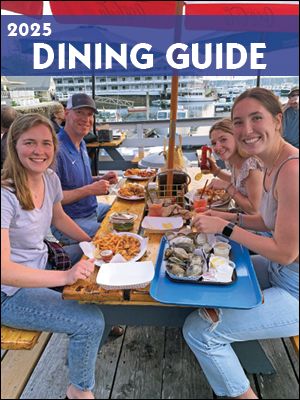So what exactly does the planning board do?
The work of a town planning board isn't always obvious to its residents, at least not until something brings them to a meeting. Recently, the Register joined Skip Simonds and Tom Churchill as they shared more than 20 years of combined experience serving as chairmen of local planning boards.
Simonds is in his 12th year as chairman of Southport planning board and Churchill chaired Boothbay Harbor's planning board for nine years until last year. Their discussion was wide-ranging and provided an insight into the responsibilities of local boards.
We asked if there is a misconception about the planning board's work. "The public thinks we're there to protect the culture of the town," Simonds replied. "But our only 'client' is the land use ordinance. We're there to interpret and apply it."
Ironically, he added, "We don't do any planning. The scope of the planning board is well-defined but not well-known. We review applications for permits." Both Churchill and Simonds explained, the review determines if applications comply with ordinances. "The planning board is a quasi-judicial body interpreting the ordinances," Simonds said. Churchill agreed, saying applications either comply with land use ordinances or they don't.
Churchill explained in Boothbay Harbor, there are two primary responsibilities for the planning board. First, it reviews land use ordinances and makes recommendations to the selectboard for changes or new ordinances. Second, it is responsible for updating the town's comprehensive plan, which sets "the foundation for the ordinances," he said.
In any given year, planning boards review diverse applications. Southport's board has reviewed applications ranging from creating condominiums, to pier extensions, enclosing porches, expanding cottages or demolishing and rebuilding a residence. It meets monthly when there is business to conduct. Public hearings on proposed changes to ordinances to comply with LD 2003 and short-term rentals have also been on the agenda.
Boothbay Harbor's planning board also meets monthly. Applications submitted for approval have included mobile food vendors, shoreland permits for aquaculture, dividing the Boothbay Region Greenhouses lot, drainage plan for the affordable housing development on Alexander Way, minor subdivision at the former Beach Cove Waterfront Inn and sewer district electrical projects, and in one instance included a perceived threat to its members.
All of this takes time.
Besides the monthly meeting, Simonds estimates it takes three to four hours each week and Churchill estimates five to eight hours each week of additional work. Southport's planning board consists of five members and three alternates and Boothbay Harbor's is five members and two alternates. Planning board members in both towns are appointed by the selectboard.
Both Simonds and Churchill agree any questions asking what can or can't be done on a property should first go to the code enforcement officer or building inspector. Once approved, Boothbay Harbor's planning board recommendations for new ordinances go to the selectboard as the next step, while on Southport ordinance recommendations from the planning board go to the town warrant for vote.
Asked about recent challenges facing their boards, Churchill said it was frustrating for him because there were land use activities needing to be added to the ordinances like short-term rentals, employee housing, downtown development and parking. "We asked the town for help from a professional planner but the town didn't fund it."
"As our culture changes, ordinances have to reflect that." Churchill pointed to the former bowling alley property and the difference in the required setback on Route 27 for residential and commercial property. And short-term rentals didn't exist five years ago," he continued. "Nothing in the ordinances mentions them or the need to register them and establish minimal safety standards."
Simonds pointed out that on some issues there's no way to find consensus and it comes down to what makes the most sense. An example is the former Ship Ahoy motel, torn down after the owner's death. "Someone wanted to put in 75 condos," Simonds said. "There was nothing in the land use ordinances that prohibited it but it never happened because the cost of bringing water to the property was too great."
One of the roles of the planning board chair is to find possible new board members. "The perfect person," Simonds said, "is someone who doesn't know anything about land use ordinances and is a fresh set of eyes," rather than someone trying to enforce a particular point of view.
Churchill agreed. "The really good members are independent-thinking. When someone asks about being on the planning board, it forces you to think about what it really means, both to the individual and the town."
Both Simonds and Churchill said their service on the boards comes from caring about the community.
Asked what they learned from their years on the boards, Churchill answered, "People should be able to do what they want to do with their property as long as it's legal." Simonds agreed. "We shouldn't say 'no' unless there isn't a way to get to 'yes.' "
Southport and Boothbay Harbor planning board meetings are held in their town offices and are open to the public. For dates, times and other information, check notices in the Boothbay Register.


